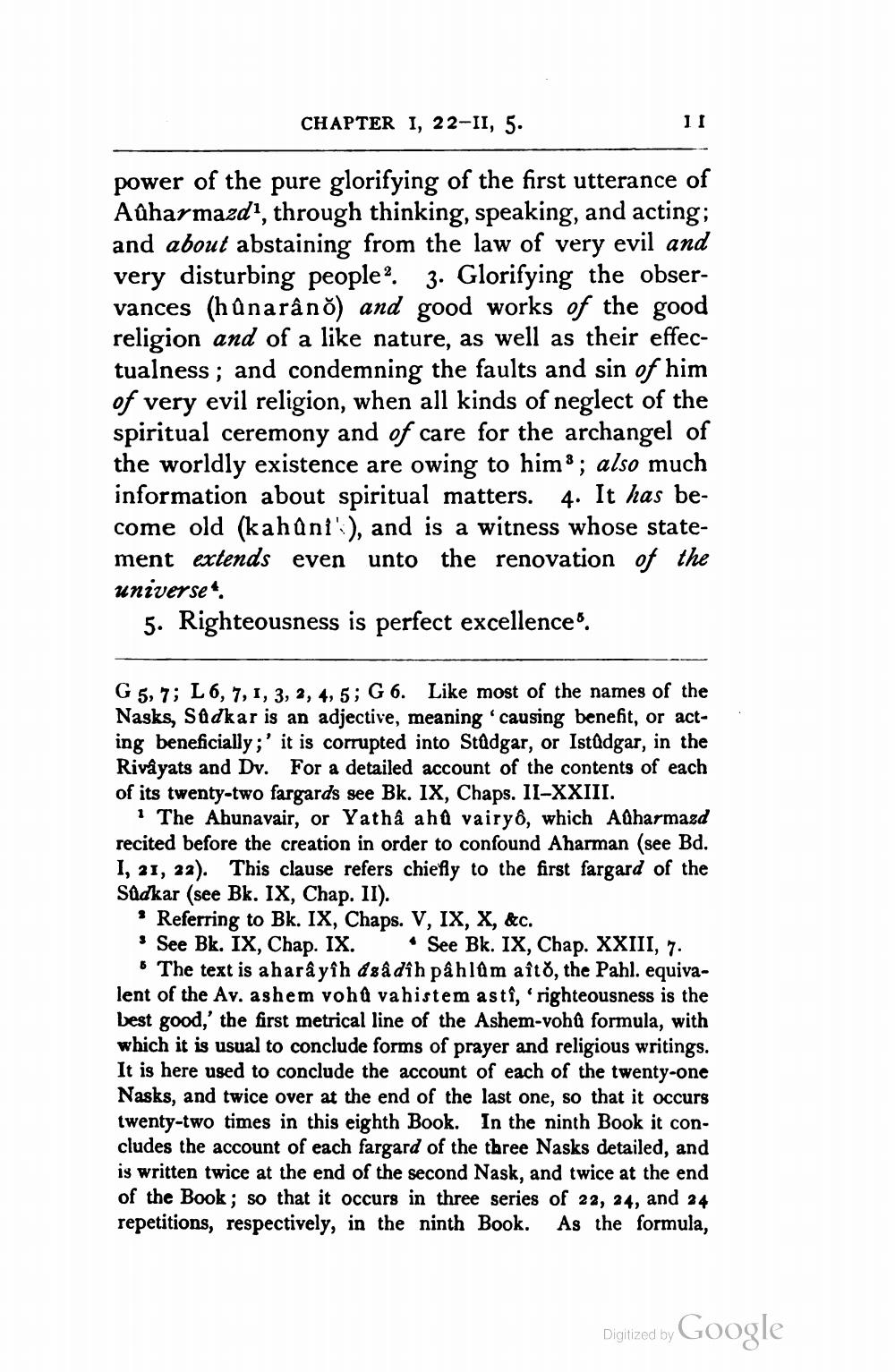________________
CHAPTER 1, 22-II, 5.
power of the pure glorifying of the first utterance of Allharmazd", through thinking, speaking, and acting; and about abstaining from the law of very evil and very disturbing people. 3. Glorifying the observances (hûnarâno) and good works of the good religion and of a like nature, as well as their effectualness; and condemning the faults and sin of him of very evil religion, when all kinds of neglect of the spiritual ceremony and of care for the archangel of the worldly existence are owing to hims; also much information about spiritual matters. 4. It has become old (kahồni':), and is a witness whose statement extends even unto the renovation of the universe.
5. Righteousness is perfect excellence.
G 5,7; L 6, 7, 1, 3, 2, 4, 5; G 6. Like most of the names of the Nasks, Sadkar is an adjective, meaning 'causing benefit, or acting beneficially;' it is corrupted into Stadgar, or Istadgar, in the Rivåyats and Dv. For a detailed account of the contents of each of its twenty-two fargards see Bk. IX, Chaps. II-XXIII.
1 The Ahunavair, or Yatha ahū vairyo, which Adharmazd recited before the creation in order to confound Aharman (see Bd. I, 21, 22). This clause refers chiefly to the first fargard of the Südkar (see Bk. IX, Chap. II).
Referring to Bk. IX, Chaps. V, IX, X, &c.
See Bk. IX, Chap. IX. See Bk. IX, Chap. XXIII, 7. • The text is aharâyîh dsâdîh påhlům aîtě, the Pahl. equivalent of the Av. ashem voh vahistem asti, righteousness is the best good,' the first metrical line of the Ashem-vohů formula, with which it is usual to conclude forms of prayer and religious writings. It is here used to conclude the account of each of the twenty-one Nasks, and twice over at the end of the last one, so that it occurs twenty-two times in this eighth Book. In the ninth Book it concludes the account of each fargard of the three Nasks detailed, and is written twice at the end of the second Nask, and twice at the end of the Book; so that it occurs in three series of 22, 24, and 24 repetitions, respectively, in the ninth Book. As the formula,
Digitized by Google




